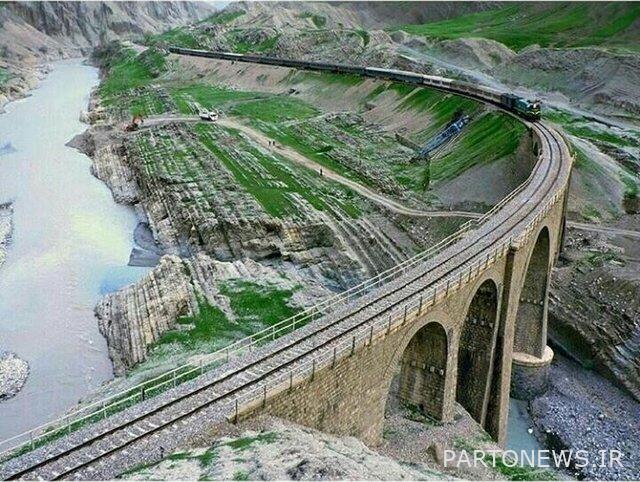Will Iran’s railway pass through UNESCO?

Iran has participated in the UNESCO World Heritage Committee this year with two cases, “Railway” and “Horaman”. Experts have provided Iran with an initial opinion on the two cases. Horaman appears to have a better chance of being inscribed on the World Heritage Railway, although cultural heritage officials still hope both cases will be inscribed on the UNESCO World Heritage List.
According to ISNA, the UNESCO World Heritage Committee started working in China on Friday after a one-year hiatus due to the corona epidemic. The committee is virtual, and according to the deputy director of cultural heritage, only members of the International Committee are present in Fuzhou, China. Virtualization has reduced the power of consultation and negotiation over the registration of files. Mohammad Hassan Talebian had previously mentioned this point. He has now moved to France, UNESCO headquarters, so that consultations may be better from this angle.
The Iran Railway case is scheduled to be reviewed on Sunday, July 25, according to the schedule announced by the UNESCO Secretariat, and the Horaman (Oramanat) Cultural Landscape Registration File is scheduled to be reviewed on Tuesday, July 27 (August 5). In an interview published on the news website of the Ministry of Cultural Heritage, Tourism and Handicrafts on Saturday, July 17, Talebian said: “The initial theory of ICOMOS regarding these two cases has been announced, and based on the comments received, Oramanat or Horaman is very lucky to be registered.” It is on the World Heritage List, and of course there are issues with the railway case. However, we are in final consultations for these two cases.
The Deputy Minister of Cultural Heritage did not elaborate on the UNESCO experts’ opinion on the railway case and said in private that due to the technical complexity and scope of the two cases, the expert review process at ICOMOS and the World Heritage Committee is significant.
According to Talebian, the evaluation of the railway case was carried out in 2009 with field visits by the ICOMOS Assessor (International Council on Buildings and Premises). At the same time, amendments and comments were made to this case. In fact, the railway case in 2017 was handed over to UNESCO. UNESCO experts at the time also commented on the case. The Deputy Minister of Cultural Heritage said: “UNESCO experts needed more maps and details to complete the file, and in this regard, they were provided with more information so that the file could be evaluated in 2018 and registered for 2019.”
But the railway case in 2019, which was reviewed by the World Heritage Committee along with Hyrkani Jungle, was reversed due to its shortcomings, and while Hyrkani was inscribed on the UNESCO World Heritage List, Iran’s other quota for the World Heritage List was lost. The chances of this case were to be tested again in 2020. But the Corona virus postponed the summit for a year. Now, in the 2021 summit, the registration of this case is going to be raised again, but the prediction of the relevant experts, according to the initial opinion of the evaluators and UNESCO experts, is that the chance of the railway case may not be as high as Horaman. Consultations on both cases are ongoing, however.
In recent years, Iran has resorted to a series of cases to make up for years that it was not on the UNESCO World Heritage Committee; Qanats, churches, Persian gardens and now the railway and then the case of caravanserais. The Deputy Minister of Cultural Heritage is of the opinion that large chain cases are good and will have a good chance. The railway file also covers 1400 km and connects the provinces. It is not a small case for a country. All stations و and. Can be introduced as global destinations. Since the case of the railroad, many of the old railroad buildings have been preserved, with the intention of demolishing them. These buildings are even supposed to become a residential center or a railway museum.
Iran Railway Network, with its wide range throughout the country, has a live and working system that is maintained, repaired and operated by the Railway Company of the Islamic Republic of Iran. This network has always witnessed the involvement of exploitation and development factors. Although there are old and valuable structures, bridges, stations and even locomotives around this railway network and parts of this network, such as the North-South railway, have a historical identity, but the main question is whether Iran will be included in the world list. How can UNESCO control and protect interventions and exploits with this vast rail network so that this widespread impact is not further jeopardized and endangered?
What is the vision for the operator and its custodian to maintain and protect this work and how to implement development projects in the rail network?
Another question that has arisen for cultural heritage activists and remains unanswered is why, despite the 57 pending cases on the UNESCO Provisional List and the controversial record of protection and preservation of national and world heritage by the custodian, cultural heritage officials continue to track and record The giant railway case insists that it was challenged by UNESCO Economists experts from the beginning?

